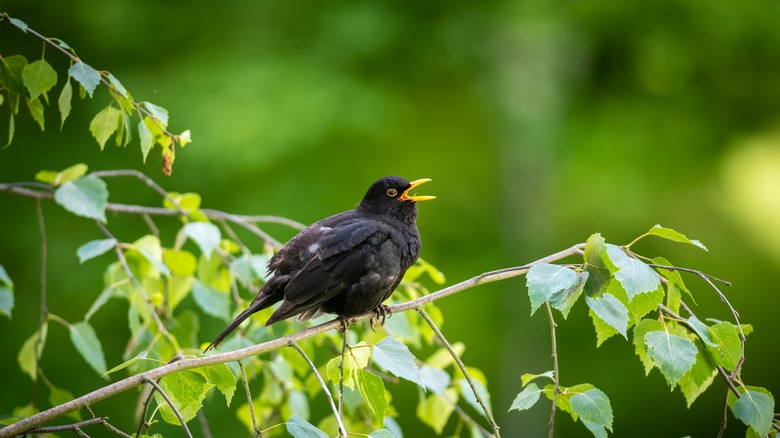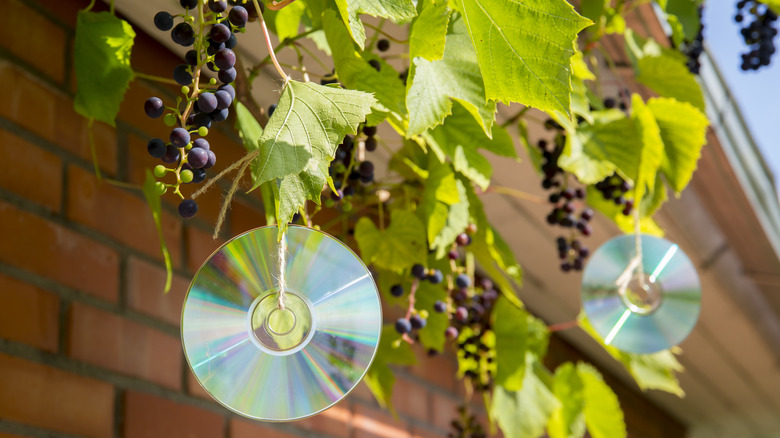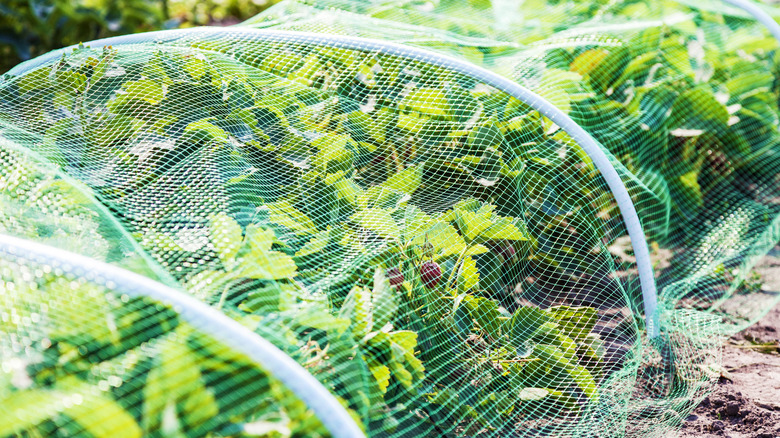Do Reflectors Really Work To Keep Birds Away From Areas Of Your Yard?
You've noticed that bird life is booming in your garden lately — but you've also clocked that berries are missing and sown seeds have been plucked from the ground. It's a frustrating but familiar conundrum for gardeners and nature enthusiasts. While you enjoy sharing your space with birds, you also want to be able to enjoy your plants, flowers, and edible harvest. That's why some folks turn to deterrents like reflectors to keep birds out of specific areas without harming them.
There might be a couple of reasons why you're after reflectors and other methods of diverting birds. It could be that one section of your garden houses a berry patch that's getting a little too popular with the local avian community. There are also certain birds you don't want to be seeing in your yard at all, whether it's due to the parasites they bring or the havoc they wreak on other birds' nests and young. It could even be a safety measure for birds who keep running into your windows. Reflectors are popular because they're effective — until the birds get used to them, at least –and work best when paired with other methods like nets. If you're considering using reflective objects to scare off birds, here are some factors to consider.
Do reflectors and shiny objects scare birds?
In most instances, using reflectors is one of the better methods for keeping birds out of your yard or parts of it. These shiny deterrents could take the form of shiny tape strung across trees or fruit shrubs, scare balloons, or old CDs repurposed on string. Not only could it help save fruits, veggies, and seeds from being gobbled up, but it can protect birds from unsafe areas, too. Clean windows with reflections of the sky or habitat in front of them are often dangerous to birds in flight, so many people dangle reflectors outside windows or use one or two stickers. Incidentally, one study found that taping patterns across windows was effective in reducing life-threatening crashes.
Are there any downsides to using reflectors or instances where they lose efficacy? As with any method of repelling, it largely depends on the type of bird and how they respond to threats. While some birds may flee at the sight of a moving shiny object, others might fly off initially but then over time grow accustomed to these objects deflecting light. There are also some birds that are inquisitive about objects (shiny or otherwise), such as magpies, jays, and jackdaws, so a shiny ribbon or balloon flapping in the breeze may not do anything to scare them. It's best to determine which birds are causing trouble in your yard and learn more about that particular species before settling on a suitable deterrent.
Other methods for keeping birds away
The most important thing is finding a method that won't hurt the birds, you, or the plants in your garden. Shiny objects and reflectors are great, but there are other handy physical deterrents, too. Nets, for one, can discourage birds from picking at plants like strawberries and grapes. Just be sure to select the right size of net and check it for damage as time goes on. With birds and potentially other pests nipping at it, it may develop holes and need replacing.
You can also ward off garden-hungry birds with kitchen items that probably already exist in your fridge or pantry. One study found that starlings were less likely to eat if garlic oil was present. Another option is using peppermint oil as a repellent. There are other tips and tricks for preventing birds from feeding in these areas that instead incorporate their natural predators. Decoys and fake models of owls and birds of prey can be positioned in certain parts of your garden. These can scare off birds, but like reflectors, birds may start to eventually catch on that the faux birds aren't there to harm them.


